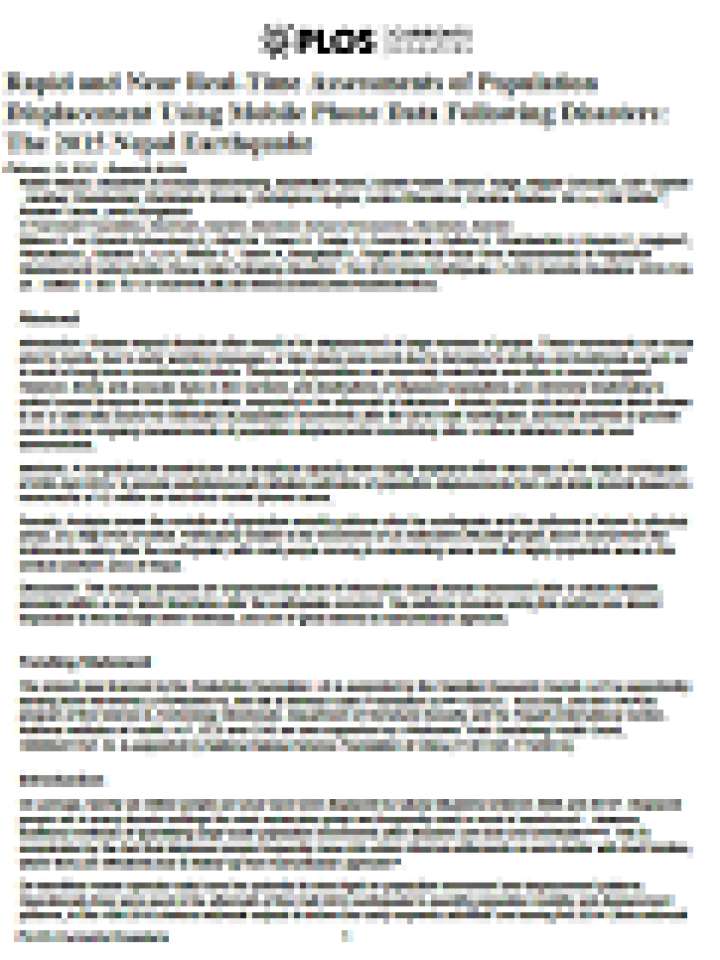Rapid and near real-time assessments of population displacement using mobile phone data following disasters: the 2015 Nepal earthquake
PLOS Currents Disasters 2016, Edition 1, doi: 10.1371/currents.dis.d073fbece328e4c39087bc086d694b5c
This analysis provides an unprecedented level of information about human movement after a natural disaster, provided within a very short timeframe after the earthquake occurred. The patterns revealed using the method proposed in this paper are almost impossible to find through other methods, and are of great interest to humanitarian agencies. A computational architecture and analytical capacity were rapidly deployed within nine days of the Nepal earthquake of 25th April 2015, to provide spatiotemporally detailed estimates of population displacements from call detail records based on movements of 12 million de-identified mobile phones users.
Analysis shows the evolution of population mobility patterns after the earthquake and the patterns of return to affected areas, at a high level of detail. Particularly notable is the movement of an estimated 390,000 people above normal from the Kathmandu valley after the earthquake, with most people moving to surrounding areas and the highly-populated areas in the central southern area of Nepal. Displaced populations are especially vulnerable and often in need of support. However, timely and accurate data on the numbers and destinations of displaced populations are extremely challenging to collect across temporal and spatial scales, especially in the aftermath of disasters.
Explore further
